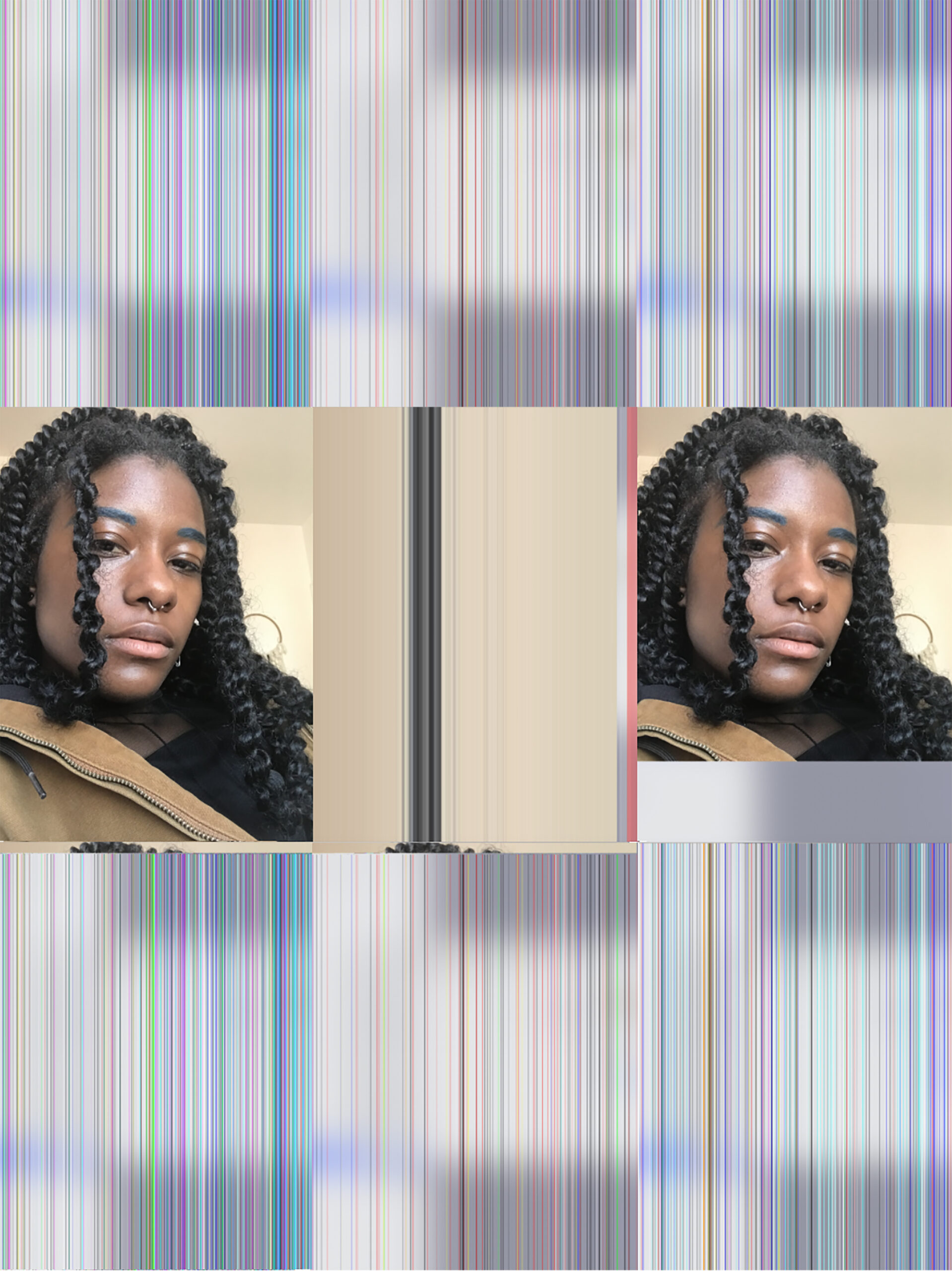How do you fix the anti-blackness, transphobia, and ableism that is embedded in the hardware and software of most of our systems, government, technology, and within ourselves? Artist Cy X explores how “the glitch” can reveal possibilities and new worlds that have yet to be dreamed of.
DATABENDING EXPLORATION:
On May 8th, I tweeted “How long will my black body be watched / consumed / retweeted after I die?”

This question was hinting at a certain anxiety I have around my imagery and its relation to death, particularly, due to the black death imagery that was circulating on every social media feed I was on.
Why must we circulate these images of murders and violent killings in order for people to finally believe that BLACK LIVES MATTER?
For months, I had been confronted with death, like the video of Stephon Clark murdered by police in Sacramento, California, and was reminded of all the many other videos I had seen reposted, tweeted, and nudged in between selfies on Instagram Stories. Without warning. Without consent. I was forced to confront my own death (both impending and current). I imagine no one could have predicted the impending virality of their deaths or perhaps more specifically, their images. Their multitudes condensed into imagery, pixels that were supposedly used as an alchemic process toward supposed change.
Again, why must we circulate these images of murders and violent killings in order for people to finally believe that BLACK LIVES MATTER?
Seeing is believing, they say. So retweet away.
And even then…
And even then…
In January 2020, I participated in The School for Poetic Computation’s Code Society and took a class called “The Fuzzy Edges of Character Encoding” taught by Everest Pipkin, a drawing, game, and software artist. There I was exposed to the history of how computers communicate and how we communicate through computers to each other. But what really stood out to me, was the fact that everything on the computer is connected to a set of numbers. Even these words on your screen right now. Even the images. Even the images of black death.
Thinking about the anxiety I had surrounding my images, my death, and the circulation and consumption of my body, I wondered, what kind of file is the body? What kind of file am I?
What is the difference between me and a computer, or more specifically, between me and the code for me?

My general approach to a question is to explore the possibilities of an answer through art, software, movement, writing, conversation, or whatever seems fit for the question. For these questions above, I decided to move through the process of data-bending using an image of myself. To figure out who I was in comparison to my code, I needed to go through the process of uploading and visualizing the self that my computer companion sees and ultimately what others see when viewing me on screen.
Data Bending is the process where you upload one file in a program that was designed to open another kind of file. An example of this would be opening a MP3 file in Adobe Photoshop, a program meant for images.
What kind of file am I and what program was designed to open me? It feels like any attempt to upload myself would result in databending.
To begin, I opened a selfie of myself in a hex editor, an editor that allows you to see the binary data of a file, to experience the process of looking and truly seeing my guts – a conglomeration of numbers and symbols.
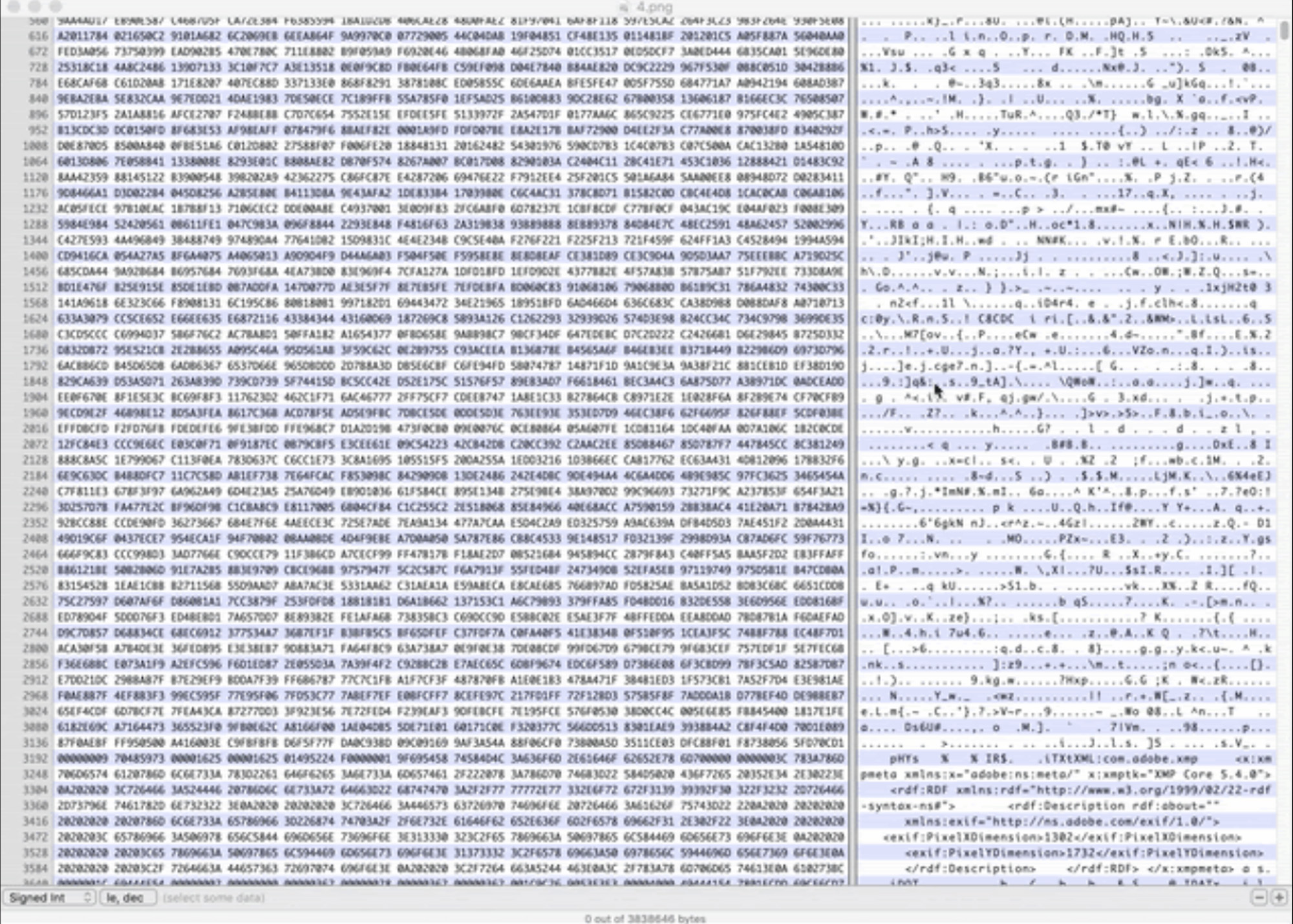
Technically, we are seeing both the binary and ASCII representation of each of the bytes on the right-hand side.
ASCII: American Standard Code for Information Interchange
What’s the American Standard Code for blackness?
An editor allows you to edit, to add, to subtract, and to save the changes that are made and create something anew. So I did just that with the code. With each edit, I saved the file and re-opened the image on my desktop to see the results of the change. I did this process over and over until I could not recognize myself anymore.

This process produced many glitches. Eventually I glitched the file to the point of not being able to open it, to the point of death.
GAZE MAKES THE GLITCH:
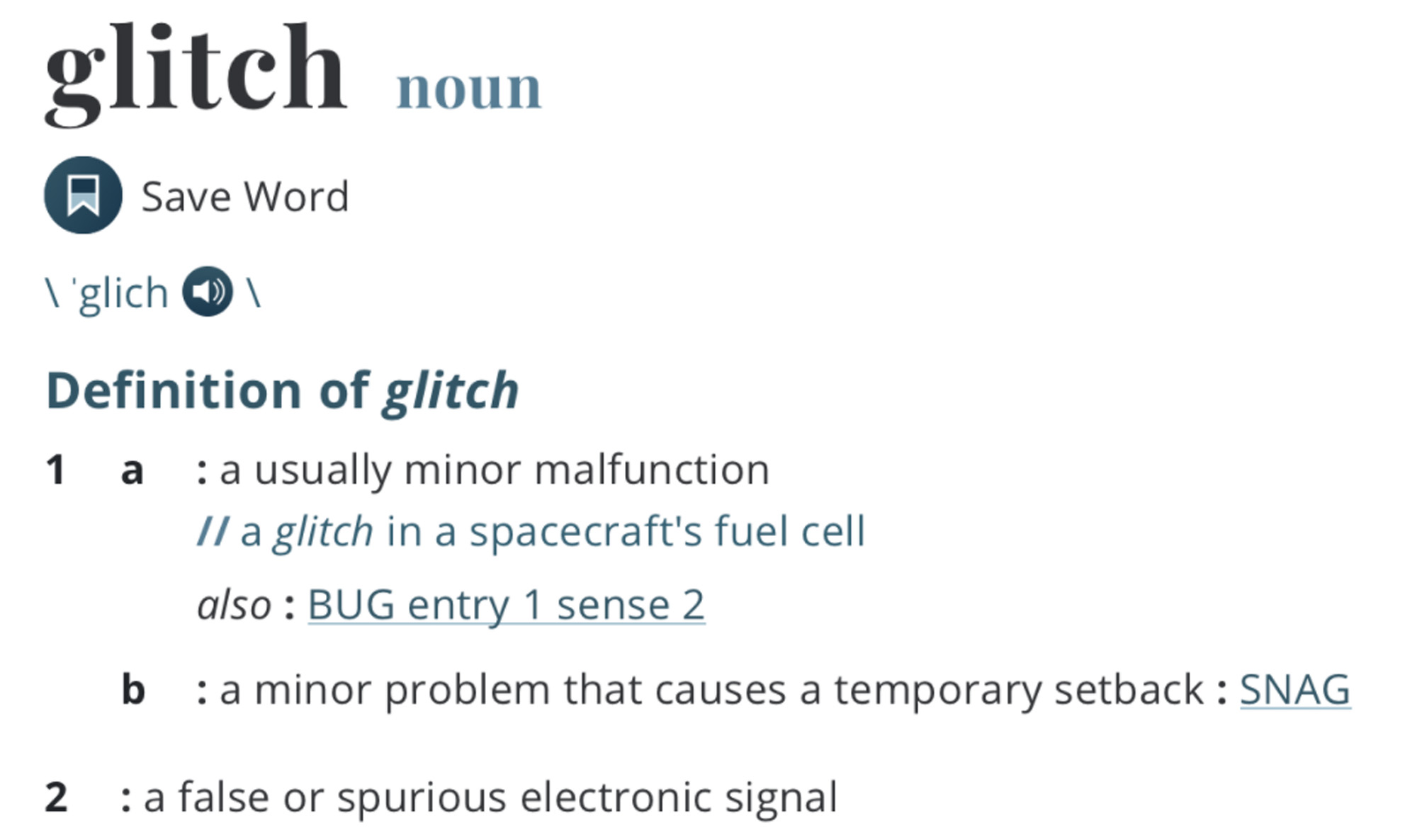
Interestingly enough, when I took a screenshot of the image above, my computer kept making the shutter click, to the point where it was on loop repeatedly, until I turned my computer off, a literal glitch.
Although this data-bending exercise was a digital exercise, the results feel painfully familiar, a reminder of the small gap or rather non-existent gap between the screen and my AFK being. The glitch is NOT isolated to the screen. It was evident to me, through my body/mind technology, that I knew exactly what a glitch felt like.
What does the everyday glitching process look like? And what I mean is not a glitch in the system such as a tiny inconvenience or tiny error but rather what does the process of adding and removing code to the point of rendering some bodies fully seen and visible and others invisible or visible but legible look like in the everyday?
“A key feature of this work is the understanding that racialized groups are not only the objects of harm and neglect, but that the meaning and power of racial hierarchies are enacted through technoscientific processes.” – Captivating Technology, Ruha Benjamin 1
Capitalism understands the benefits of selective incorporation. Through inclusion, it can control. Through creating and mandating a code or a score, it can control. To be “fully seen” oftentimes means to be controlled. So, here I stand in the collapse of space between online and AFK, glitched, enclosed, controlled, incorporated, visible, failing and caring, loving, moving magically through it all.
We know about the glitch.
It’s in the algorithms used to determine the trajectory of a life and the likelihood that someone is supposedly a criminal. Like a magical sleight-of-hand trick, humans avoid accountability but embed racism into numbers and machines. Playing dumb as if we can’t tell who trained them.
We know about the glitch.
It’s in the destroyed archives and records so that I may not find my way back to ancestral technologies. So that, I may be stuck in the colonial linear time, a time system that mandates I both forget and cannot move forward.
We know about the glitch.
It’s in the epigenetic trauma that resides in my body that I now must dedicate a lifetime to heal. It’s in my corporeal data that remembers every time someone made me feel unworthy, ugly, disposable, worthless, dead. All lies that I have been made to keep. All lies that I no longer want to hold.
LIFE/DEATH:
Originally, I wrote that the necessity of this work was because it was a matter of life and death, but borrowing from the scholarship of Christina Elizabeth Sharpe’s In the Wake on Blackness and Being, if we recognize “Black death as a predictable and constitutive aspect of this democracy,” I then therefore intend this collection of spells and spirals to serve as a form of “wake work.”
Wake: the track left on the water’s surface by a ship; the disturbance caused by a body swimming or moved, in water; it is the air currents behind a body in flight; a region of disturbed flow.
Wake; the state of wakefulness; consciousness.
Wake: a watch or vigil held beside the body of someone who has died, sometimes accompanied by ritual observances including eating and drinking.
I’m here to defend the glitched, those that have been glitched to death and those who are dying.
“What does it mean to defend the dead? To tend to the Black dead and dying: to tend to the Black person, to Black people, always living in the push toward our death? It means work. It is work: hard emotional, physical, and intellectual work that demands vigilant attendance to the needs of the dying, to ease their way, and also to the needs of the living.” 2
To do this wake work and to understand black death as normative also helps me to understand the work that I / we must do and directs my attention toward new ways that I can be in a state of wakefulness and consciousness.
To me this requires a move away from incorporation, legibility, and visibility and towards deep listening, care, embodiment, and magic alongside an active rejection of the “answers” of capitalist technofixes and the political state. And to move these thoughts a bit further, it’s also one that motivates me to be in a “permanent readiness for The Marvelous,” a proclamation from Suzanne Césaire, a theorist associated with the négritude movement and with surrealism.
MASTER/SLAVE DYNAMICS:
I took an electronics class during my first year in an art, technology, and design program. This was my first time learning how to create what I thought would be a series of elegant and delightful interactions through physical computation and interactivity. I felt inspired for some time but then we got to the unit where we learned about synchronous communication and how to get multiple microcontrollers to communicate with each other.
There in that classroom, I sat as the only black student, as our professor introduced to us the terminology of Master and Slave in our protocol.
It was a reminder that we have not escaped the Master and Slave dynamics and in fact it has become embedded into our hardware in addition to the code of our computers.
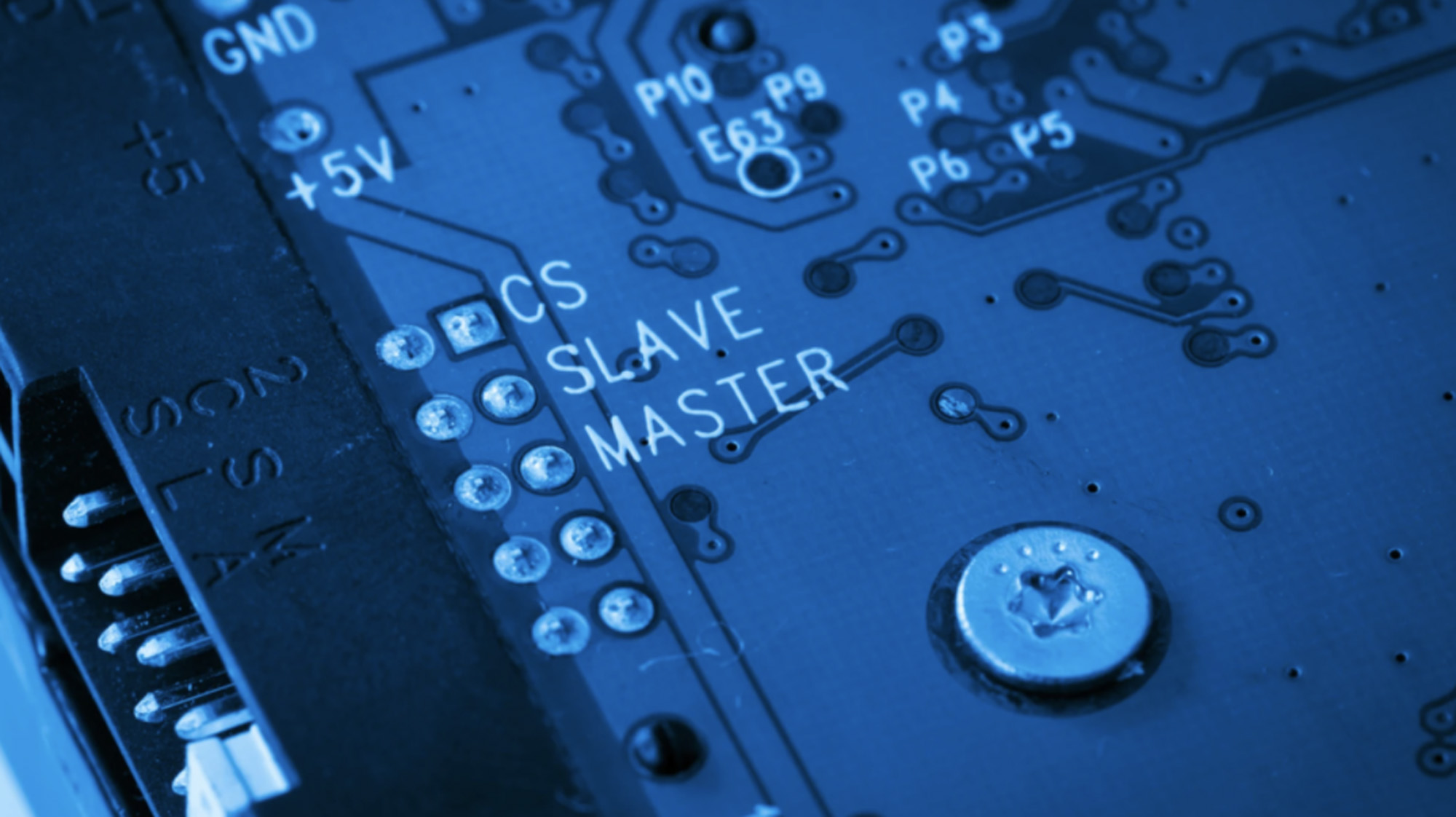
What software was made with black people in mind?
What software was made with black people in mind?
What software was made with black people in mind?
What software was made with black people in mind?
What software was made with black people in mind?
What software was made with black people in mind?
What software was made with black people in mind?
What software was made with black people in mind?
What software was made with black people in mind?
Encode: Converting data from one form to another / to cipher / encrypt
Decode: Convert encoded message into intelligible communication / decipher / to discover underlying meaning
Anti-blackness is both encoded and decoded into the technology. Thinking about the earlier data bending exploration, this looks like code being removed to the point of blackness becoming abstracted, removed from its source, and consumable by all. Abstracted Blackness is now the currency of the web, but a currency that is null if you’re actually Black.
It looks like black people being included/uploaded as numbers and datapoints which are then used as tools for dehumanization, surveillance, and murder.
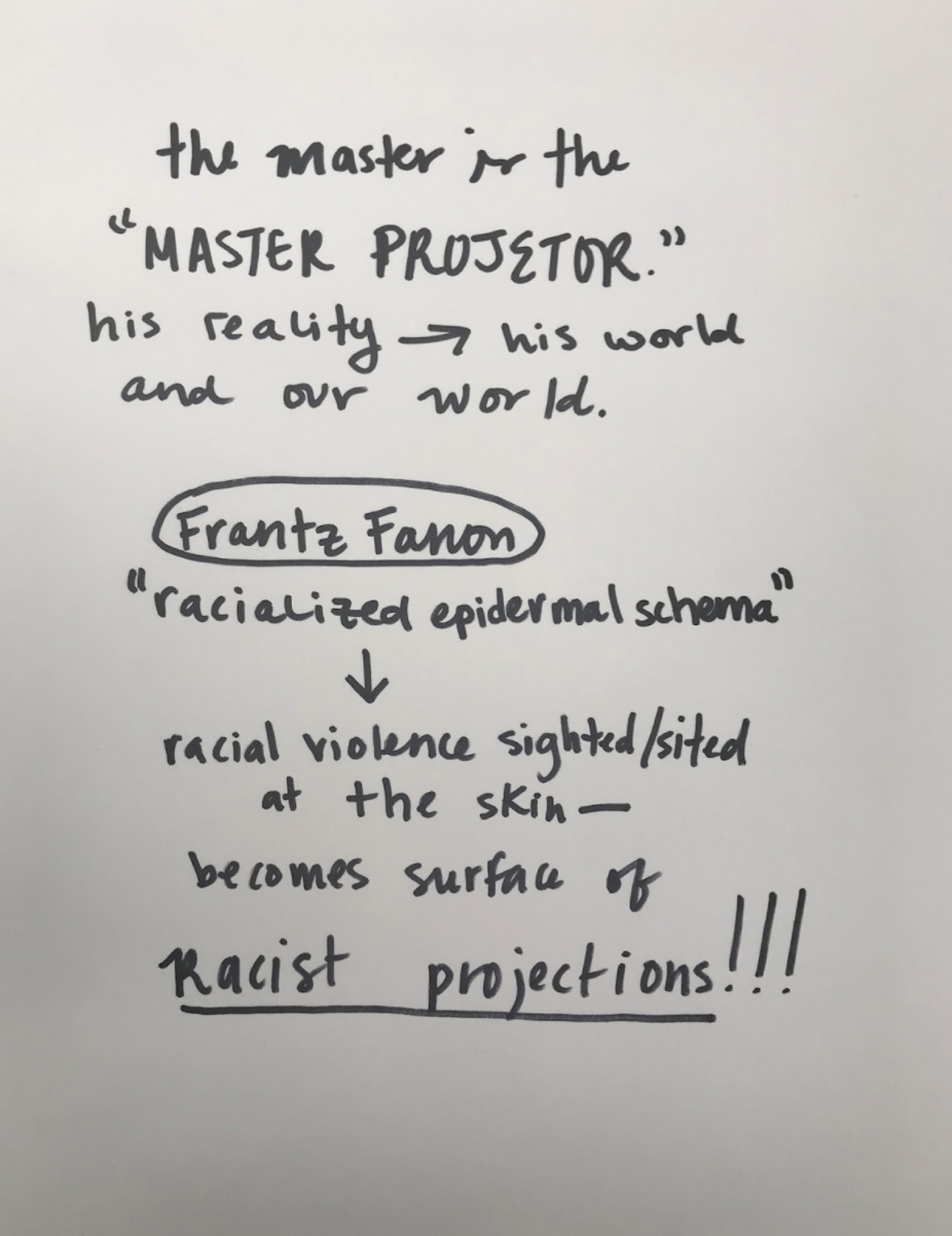
What does it mean to be uploaded?
If reality is based on our projections, to be uploaded invites the opportunity for new realities based on new projections. Continuous projections and Continuous Disembodied projections.
But as the Master and Slave narrative is embedded in the hardware, software, and AFK reality, whose projections rise to the surface of the screen and our being?
The Master’s Projections. The Master’s Gaze.
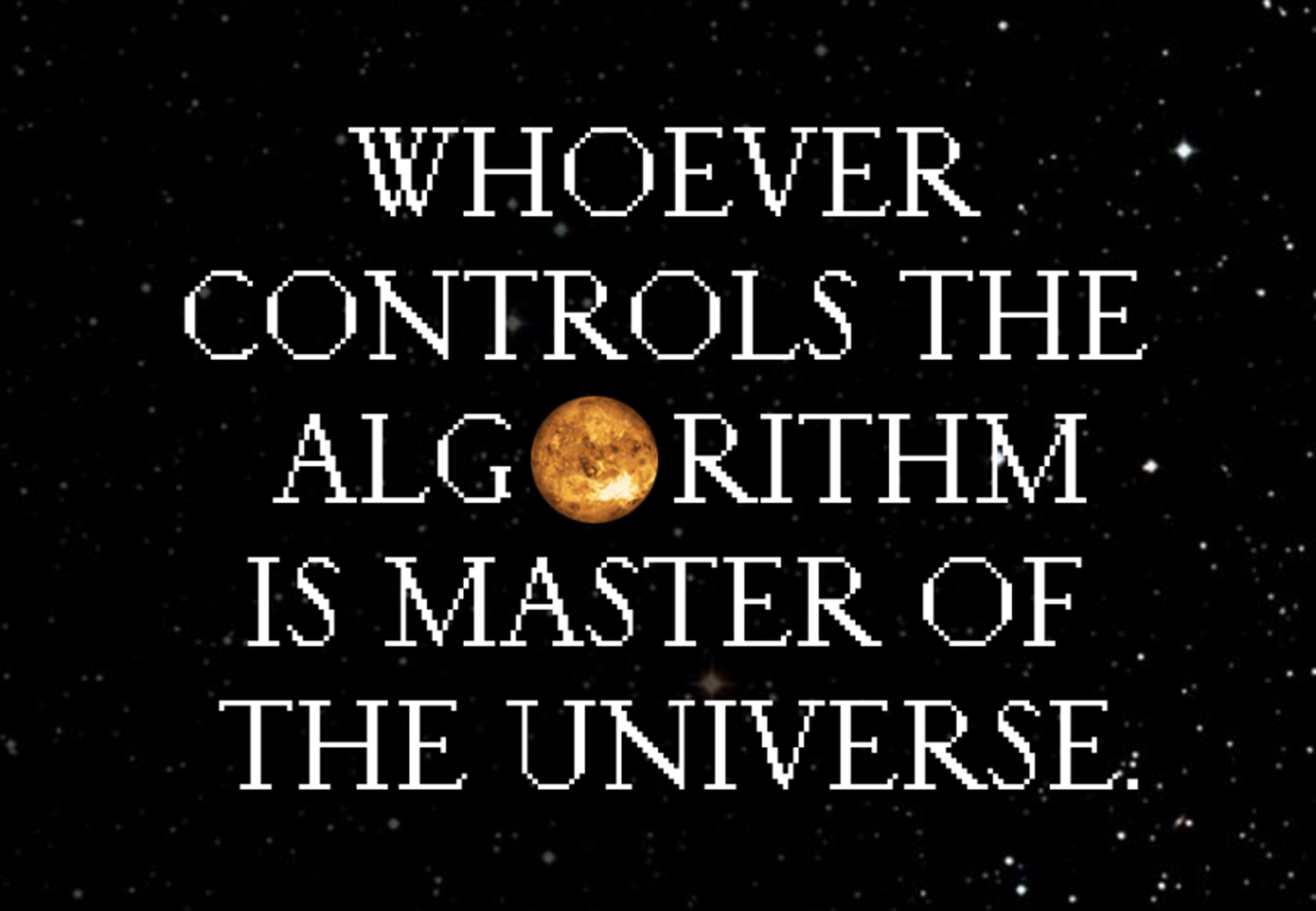
ONE-WORLD WORLD:
The technologies of capitalism and colonialism and the many start-ups birthed under them rely on the maintenance of the “one-world world,” a term coined by John Law, Professor of Sociology and Technology studies at The Open University.
The “one-world world” is a world that “privileges itself and negates the presence of other worlds.” 4
This one-world world is the Master’s World and the Master’s Projection complete with its own algorithm, a set of rules, relations, and ideologies, that compose all the things that many come to know as ULTIMATE TRUTH and REALITY.
These sets of rules, relations, and ideologies also compose what, in my magical community, we call CONSENSUS REALITY or the collection of beliefs generally regarded as true. This algorithm is what communicates to us what is and is not possible, and through this functions by negating other worlds and other realities.
The algorithm, with anti-blackness embedded in its core, dictates that Black Lives DO NOT matter, which is why we must do the magical work of manifesting and proclaiming that Black Lives DO Indeed Matter.
But many of us know that the Master’s reality is not the only reality, because many of us simultaneously live in other worlds as well and many of us are doing the necessary work of creating new-worlds every day. Many of us want more and we can, in fact, have more. Our other worlds provide more ways of being, more opportunities to exist, more collaborations, and more forms of knowledge to support us in this world traveling we embark on.
Legacy Russell in Glitch Feminism Manifesto reminds us of something that glitch has to offer: a refusal.
“We are building a future where we can have the broad range we deserve. We refuse to shrink ourselves, refuse to fit. Fluid, insistent, we refuse to stand still: we slip, we slide. We recognize the contributions of blackness toward liberatory queerness, and the contributions of queerness toward liberatory blackness. We fail to function for a machine not built for us. We refuse the rhetoric of “inclusion” and will not wait for this world to love us, to understand us, to make space for us. We will take up space, and break this world, making new ones.” 5
There is fluidity in refusal. Initially, when working on this project in early 2020, I was stressed by this idea that I had to “fix” this world, a world that is undeniable anti-black, cold, and unforgiving. How do you fix the anti-blackness, transphobia, ableism, etc that is embedded in the hardware and software of most of our systems, government, technology, and within ourselves? But the glitch has shown me that there are possibilities available to us all and new worlds and collaborations that I have not even dreamed of. Glitch creates space. In the break of the glitch, there is room to append our own code, transforming both the world and ourselves into beautiful chaotic realms where we no longer shrink but expand, moving toward liberatory queerness and liberatory blackness.
OPACITY:
Seeing is believing.
Ocularcentrism: A perceptual and epistemological bias ranking vision over other senses in Western cultures. An example would be a preference for the written word rather than the spoken word (in which case, it would be the opposite of phonocentrism). Both Plato and Aristotle gave primacy to sight and associated it with reason. We say that ‘seeing is believing’, ‘see for yourself’, and ‘I’ll believe it when I see it with my own eyes’. When we understand we say, ‘I see’. We ‘see eye to eye’ when we agree. We imagine situations ‘in the mind’s eye’. ‘See what I mean?’ 6
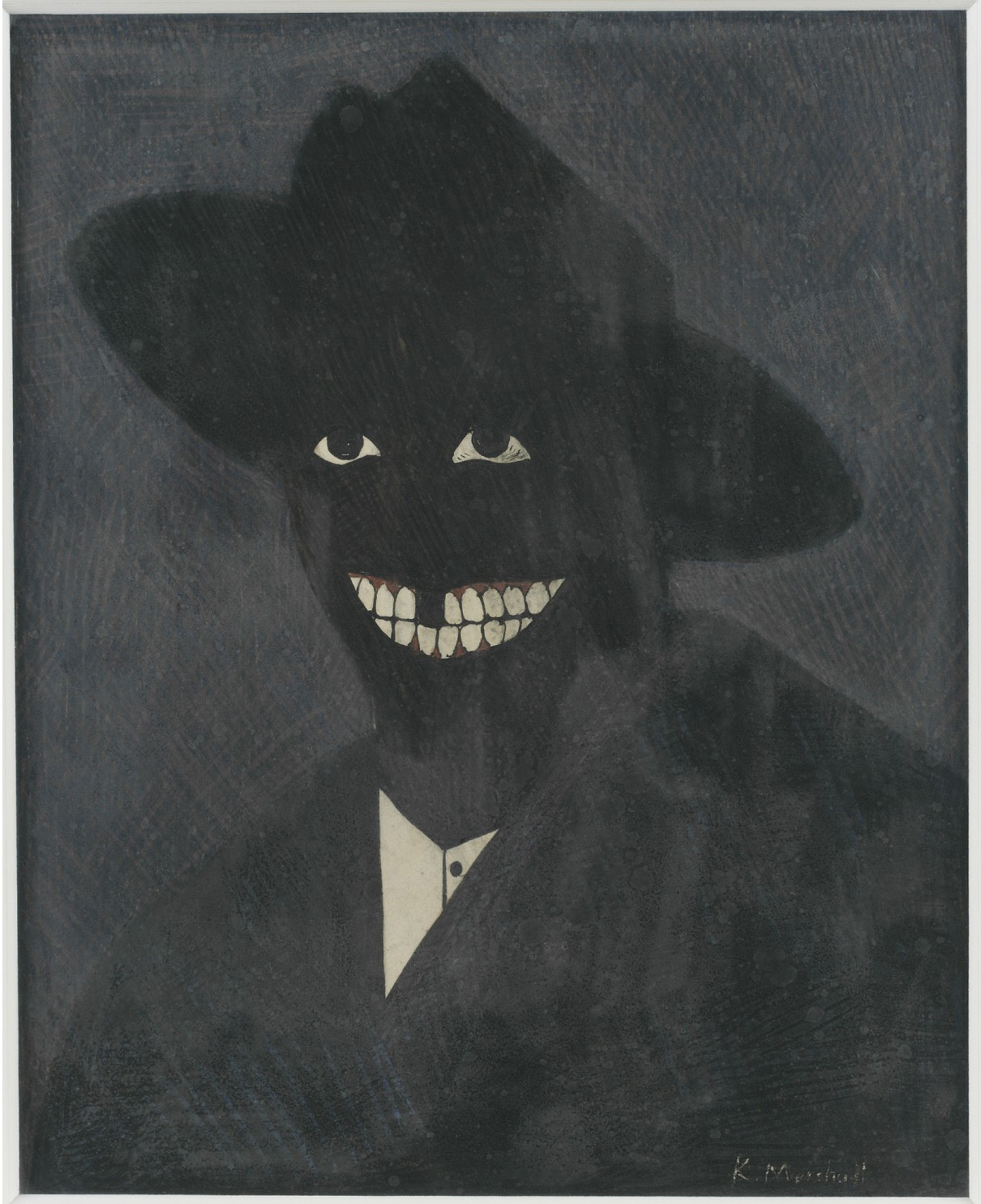
“What we have before us is a portrait of a black man by a black man, but one that looks the way a black man might feel about being looked at in a white world by people who see, in the face of a black man, not a person but a shade, a shadow, a pigmentation: blackness.” 7
Seeing is believing.
What does it mean to see? For some, to see = to exist. Thinking of the color black and Kerry James Marshall’s portrait, I am reminded of the Martinican philosopher and poet Édouard Glissant’s theory around opacity. For Glissant, Opacity denies complete incorporation and highlights the limits of understanding that come from an inability to fully quantify and identify differences. He argues that in Western thought when trying to “understand” something or someone different, a reduction occurs because all is related back to a norm and an existing system. Instead of using opacity as an assimilation tool, what if we accepted and sat with the confusion.
Seeing is believing.
Seeing is believing.
Perhaps, in Western thought, seeing ends up moving toward the act of re-creating anew or rather, re-creating as is already defined by the system and its own biases and limitations. That is if we see to understand.
“Opacity denies complete incorporation and directs us to ways of being and knowing that are vibrant, untamed, and free-floating. Opacity strives towards an ‘opportune obscurity’ such that a type of aesthetic autonomy and resistant, black inhabitation can exist.” 8
This form of black inhabitation is the embodiment of a refusal, an embodiment of the glitch. And it is also a taking up of space. Tom Vanderbilt, a technology and design writer, in his essay “Darkness Visible” written for Cabinet Magazine 9, Tom Vanderbilt, a technology and design writer, writes, writes, “To truly see black would require the loss of any visible light, meaning in fact that all would be black.” And Jared Sexton in his piece “All Black Everything” for e-flux 10 responds, “One sees black and black alone, or one sees everything else without it, we might even say against it. To see black at all is to see all black everything.” Black is the screen, the monitor, space, the sight of projections, space, everything.
EMBODIMENT:
“Skin becomes a surface that materializes black radical presence, and being in one’s skin is but one of many modes of opaque inhabitation, in which the possibilities of political refusal might take shape.” 11
Perhaps there are ways we can both exist with and exist beyond the glitch. I propose moving beyond sight, beyond ocularcentrism, and embracing a more embodied and haptic way of moving through life. What would happen if we embraced our bodies, not just our eyes, and tapped into the fullness of our own sensorial capacities and the technology that we have inherited that has ancestral data already downloaded into both its software and hardware?
My proposal of embodiment is one that is aware of and conscious of ableism. I do not want to romanticize embodiment as this supremacist likened-to-enlightenment way of being that I see unfolding, especially in neo-colonial wellness spaces. Embodiment here is used as a way to uplight and orient ourselves toward bodily knowing, this idea that we can make sense of the world through our own body knowledge. This process is one that is unique and is relationally engaged. It is a big fuck you to modern scientific methods, academia, and other systems that tell us what we should believe and how knowledge should be produced. Through embodiment and bodily knowledge, we operate from a place of knowing that many answers are already within. This movement would effectively necessitate deep listening, a term coined by composer Pauline Oliveros.

Listening is directing attention to what is heard, gathering meaning, interpreting and deciding on action. 12
Here I liken embodiment to a form of listening. How can we attune our listening to continuously include more and connect more fully to the environment, each other, and world around us? This listening is a listening to learn and requires a full engagement of our bodily knowledge.
To listen this way requires us to be with time differently and find comfort in the delay through a temporary suspension of our own voice and our own judgement.
“Listening, or the interpretation of sound waves, then, is subject to time delays. Sometimes, what is heard is interpreted anywhere from milliseconds, to many years later or never.” – Pauline Oliveros 13
TO BE WITH TIME, TO BE WITH SPACE, TO BE WITH BODY
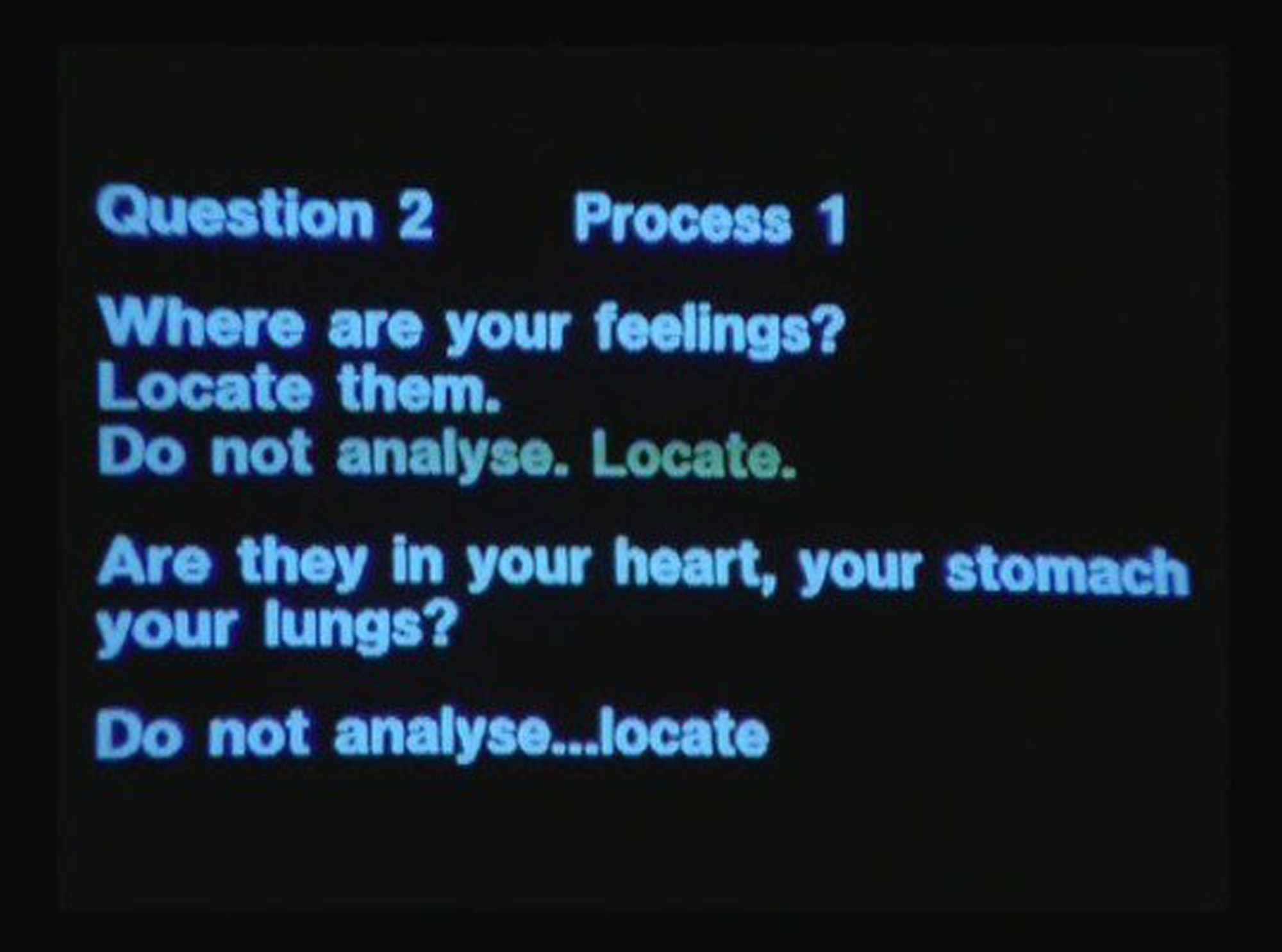
Body Scan: By mentally scanning yourself from head to toe — many people imagine a laser copier scanning the length of their body — you are bringing awareness to every single part of your body, noticing any aches, pains, tension, or general discomfort. Staying present with and breathing into these sensations can help bring relief to our minds and bodies by evolving our relationship to pain, aches, and discomfort.14
Body Scan is a mindful meditation practice that I was recently introduced to that has been instrumental in helping me reconnect with my body especially during this time of remote working, prolonged sitting, and decreased somatic connection with others. The act of scanning myself from head to toe and beyond really resonated with the practice of deep listening mentioned above.
My queer black agender body exists within the glitch, a glitch that causes me to fail and fail and fail again. To be with time, to be with space, and to be with body using tools such as body scan meditations and deep listening inform me of where I might feel the glitch, where I can direct attention to the glitch, and how I can exist with the glitch in a way that feels expansive and allow me the fluidity and space I deserve. Additionally, existing with the glitch this way also teaches me when I need more additional support and how I might ask for or need additional support (or space.)
It’s in the violent gender binary imposed on me against my will that makes my entire body ache. It’s in the epidermis that remembers every time racial violence was sighted at the skin. It’s in the gut of my belly containing technologies downloaded from ancestors that guide me home that sometimes get thrown out of whack from bad bacteria. It’s in my pelvic region that remembers the patriarchal violence inflicted on me because my black queer body was deemed disposable. It’s in the palms of my feet that are sore from restlessly walking the many worlds I inhabit.
ON MAGIC:
“The domain of the Strange, the Marvelous and the Fantastic, a domain scorned by people of certain inclinations. Here is the freed image, dazzling and beautiful, with a beauty that could not be more unexpected and overwhelming. Here are the poet, the painter, and the artist, presiding over the metamorphoses and the inversions of the world under the sign of hallucinations and madness.” – Suzanne Césaire, Tropiques (1941) 15
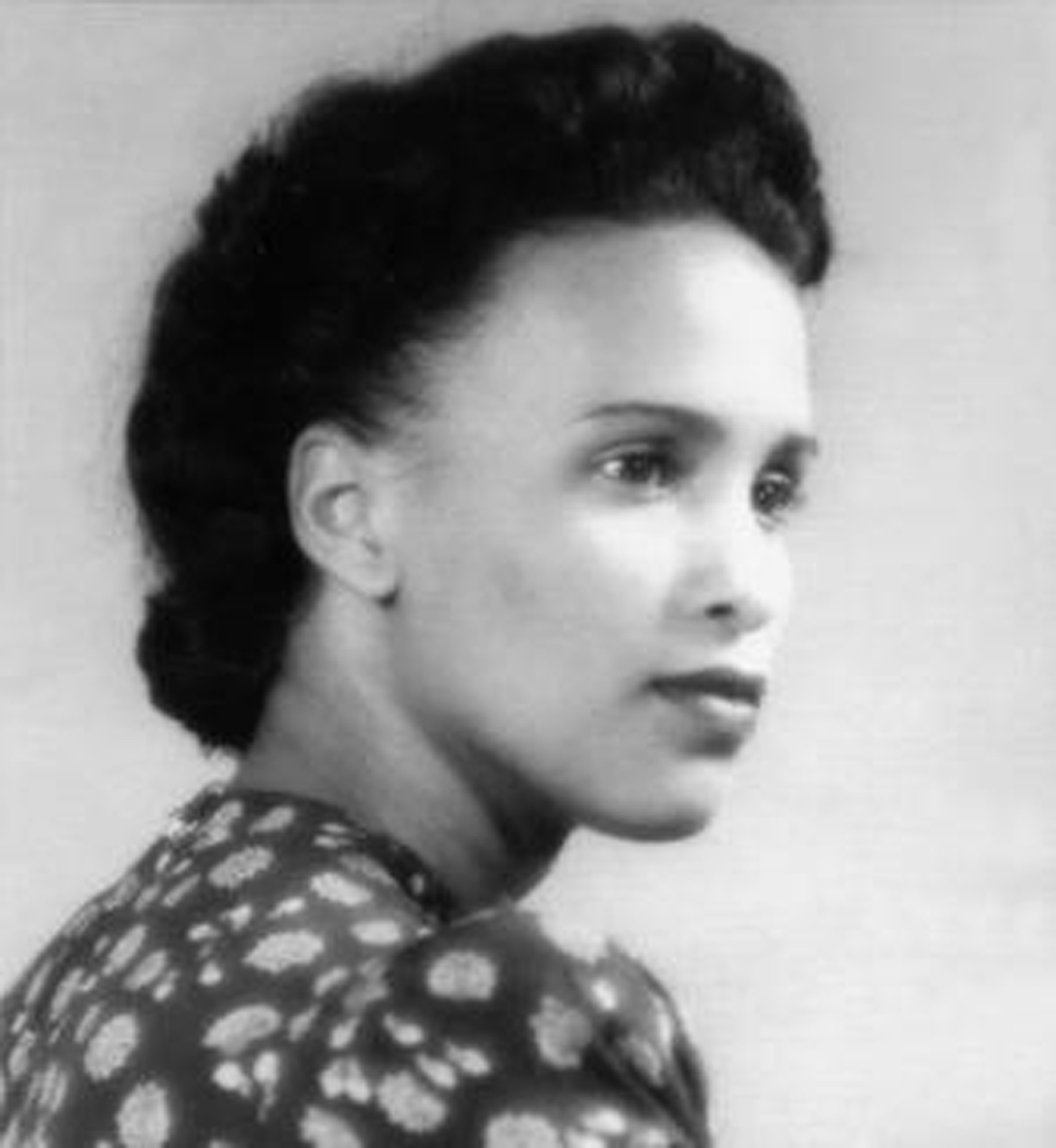
My magical practice is influenced by all the tools I have mentioned before like embodiment practices, deep listening, and art, but also takes heavy inspiration from the black surrealists writers and thinkers like Suzanne Césaire and Aimé Césaire. Although magic isn’t specifically/explicitly mentioned, Suzanne Césaire’s call to embrace the domain of the Strange, the Marvelous, and the Fantastic to me feels like a movement toward embracing the magical forces all around us.
Magic can have many meanings, but the definition of magic that I use here is defined by Aleister Crowley, English occultist and magician, as the “art and science of causing change in accordance with the will.” Here we can think of will as an engagement of intentionality. This definition of magic has been an important way to help ground this conversation so as not to get lost in all the misconceptions or ideas that magic is something inaccessible or only for people with “superior” powers.
We all are capable of causing change and many of us have been doing magic for quite some time such as breathing exercises, working with plants, meditation, wishing on a shooting star, carrying lucky objects, prayer, worshipping and honoring the moon or the sun, sex, sharing our stories with others, community work, activism, re-naming ourselves, re-claiming our bodies, engaging in decolonial practices, burning incense, carrying crystals around, making altars, paying attention to our dreams, using essential oils, engaging in tarot, allowing ourselves to be moved by each other, by art, and by music. But what if that work became more intentional and we became more confident in our powers?
We are called to create our own realities, to question and evaluate what is presented to us, and to understand the limitations of any system that we chose to abide by or use.
To believe in magic is to believe in change and to believe in the power of changing yourself and your environment and effectively the collective as it is all connected.
Another thing that feels necessary to mention, is that magic has always existed and is functioning in ways that are also extremely harmful. During the violent forced shift toward capitalism in Europe and in the Americas, a big portion of that technology was eradicating forms of magic and beings that connected us to each other, us to the land, and us to other-than-human beings. Land, gender, race, and many other ways of being became further enclosed, sequestered off into containers to more easily allow for them to be controlled. Alongside this was the shift from the collective to the individual and toward a very-limited form of “science” and not to mention, witch hunts, a violent and murderous attack on women, femmes, poor people, disabled people, sex workers, and black and indigenous folks. The purpose of this violence was to initiate a new world order and I believe a big part of restructuring the world was using magic, albeit a harmful one. What is a border? What is money? What is whiteness? What is the gender binary? These are all things that exist simply because of belief, simply because the current consensus reality includes a collection of beliefs that say that these things are both real and necessary. This way of living by adhering to these ideologies was not always the case but strongly inspired by magic and its ability to create change.
It is clear to me that magic works and even those who may not call themselves magicians or witches know that too. Magic had to be eradicated from the masses because a belief in magic is a belief in change, is a belief in creating a new version of the world, is a belief in our own powers, and for many of us it is a belief that we can actually have what we need without buying into capitalism and all its attachments.
Embracing magic has opened me up to the receiving of many gifts including the knowledge of the longue durée and deep time. Being intimate with deep time is being intimate with non-linear time. It is a commitment to not feeling “stuck” in forced western linear time that makes me feel powerless but rather an understanding that the energy from when we were algae floating atop the ocean still carries us forward today.
Many of us who exist with the glitch are also doing the work of creating other worlds where we no longer have to abide by the rules nor exist amongst colonialism and capitalism. For many of us, these new worlds already exist and we exist simultaneously in them. Perhaps there are answers if we go further and fully incorporate the multiverse and non-linearity into our lives. And although it can be jarring to be simultaneously in a world where capitalism and its effect currently exists and worlds outside of that where it does not. Magic demands that we do not forcibly adhere to binaries but come to recognize why these binaries and this violence exist, with the understanding that things can and do change.
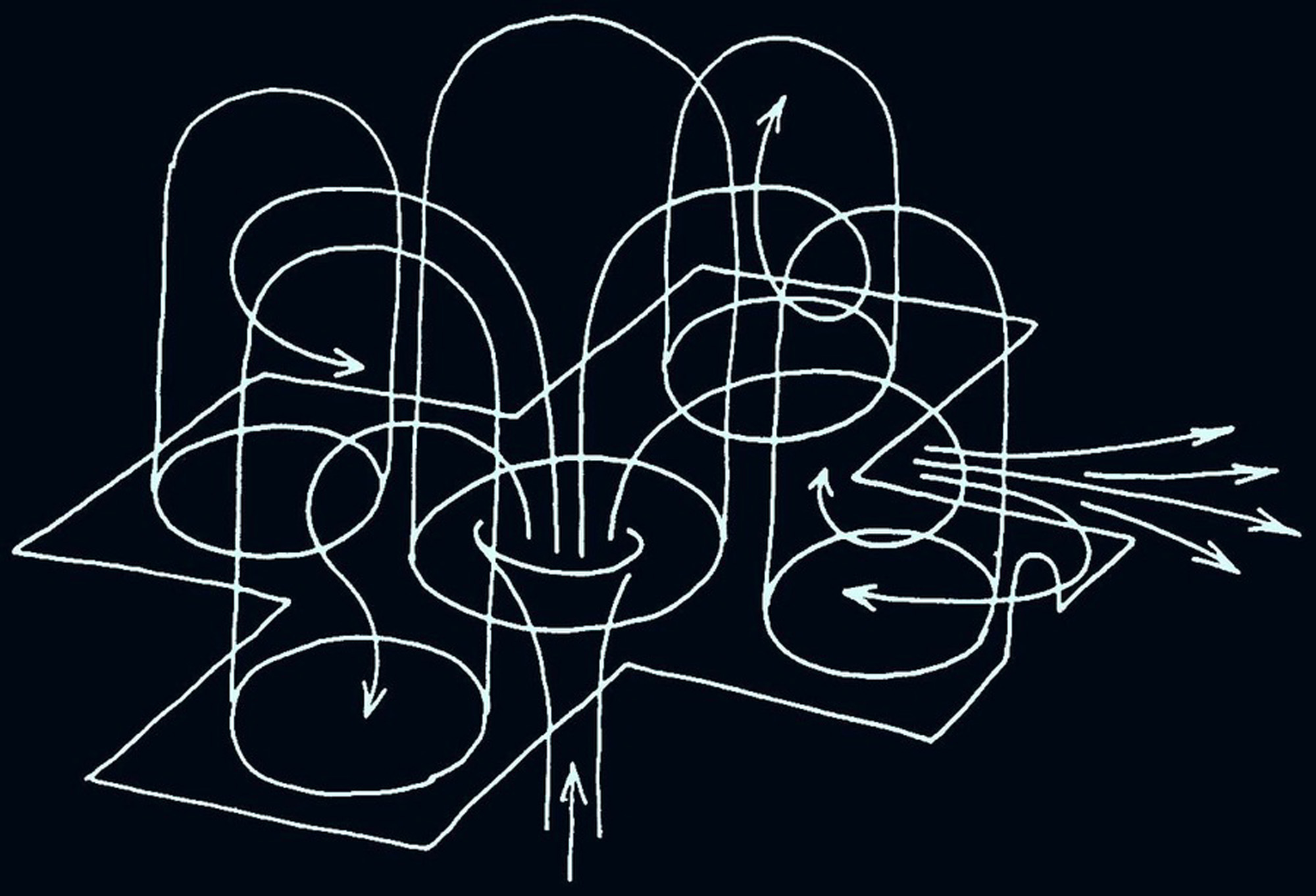
“Our surrealism will supply this rising people with a punch from its very depths. Our surrealism will enable us to finally transcend the sordid dichotomies of the present: white/Blacks, Europeans/Africans, civilized/savages – at last rediscovering the magic power of the Mahoulis, drawn directly from living sources. Colonial idiocy will be purified in the welder’s blue flame. We shall recover our value as metal, our cutting edge of steel, our unprecedented communions.” – Suzanne Césaire, Surrealism and Us (1943) 16
CREDITS:
Gaze Makes the Glitch began in January 2020 as a School for Poetic Computation Code Societies’ final project. The ideas there stuck with me and continued to serve as inspiration for other artistic projects such as my Black Projections Projection (2019) and In Pursuit of Black Noise (2020). In Fall 2020, I took a seminar class titled Music, Power, Mobility, Worldhood with Brigid Cohen in the Music Department at New York University. Our readings on comparative empire studies, world history, Afro-pessimism, migration and diaspora studies, globalization studies, and decolonial approaches furthered my work and inspired me to create this collection of thoughts, spells, and spirals that you see now. I am forever indebted to the conversations had in that weekly container. Because of that, I am a better witch. Thank you.
The website design takes inspiration from Press Press and The Institute for Expanded Research’s online Toolkit for Cooperative Collaborative Cultural Work.
The art on the home page is original work by me, Cy X.
I’d also like to thank Legacy Russell’s whose book “Glitch Feminism: A Manifesto,” pushed me to think further about my own work and how I relate to the glitch, Neta Bomani for an inspirational / organized github which I have used for inspiration for my github page, and Elizabeth Perez and Daniel Shiffman for reminding me that coding can be both a fun and useful communicative + artistic tool.
SOURCES:
- Ruha Benjamin, Captivating Technology, London: Duke University Press, 2019, p.9
- Christina Elizabeth Sharpe, In the Wake on Blackness and Being, Durham; London: Duke University Press, 2016, p. 3, 4, 10
- Frantz Fanon, Black Skin, White Masks, Grove Press; Revised edition, 2008.
- John Law, “What’s wrong with a one-world world,” Distinktion: Journal of Social Theory, Volume 16, 2015.
- Legacy Russeell, Glitch Feminism: A Manifesto, Verso Books, August 2020.
- Definition of Ocularcentrism here is taken from the Oxford Reference online.
- Wyatt Manson, “Kerry James Marshall is Shifting the Color of Art History,” New York Times, October 17, 2016, nytimes.com
- Sampada Aranke, “Material Matters: Black Radical Aesthetics and the Limits of Visibility,” e-flux 79, February 2017.
- Tom Vanderbilt, “Darkness Visible: Superblack, the blackest black of all,” Cabinet Magazine, Fall/Winter 2003.
- Jared Sexton, “All Black Everything,” e-flux 79, February 2017.
- Ibid.
- Pauline Oliveros’ definition of Listening is taken from her work in “Sonic Meditations,” and can be found on the Center for Deep Listening website.
- Ibid.
- Body Scan definition taken from Headspace, headspace.com
- Suzanne Césaire, “Tropiques,” Martinique, 1941-1945.
- Suzanne Césaire, “Surrealism and Us,” Martinique, 1943.
Cy X is a black queer non-binary storyteller and cyber witch merging sound, video art, installation, and performance. Their practice is grounded in the art of synthesis: truth generation and sound generation which is used to create portals that may aid us in exploring black queer futures and abolitionist possibilities. Fusing art and technology with the practice of witchcraft, they are inspired to use spells, rituals, and alchemic practices to fundamentally alter the world around us. Cy earned a BA in Film and Media Studies from Colorado College and is a MPS Candidate at New York University’s Interactive Telecommunications Program.
